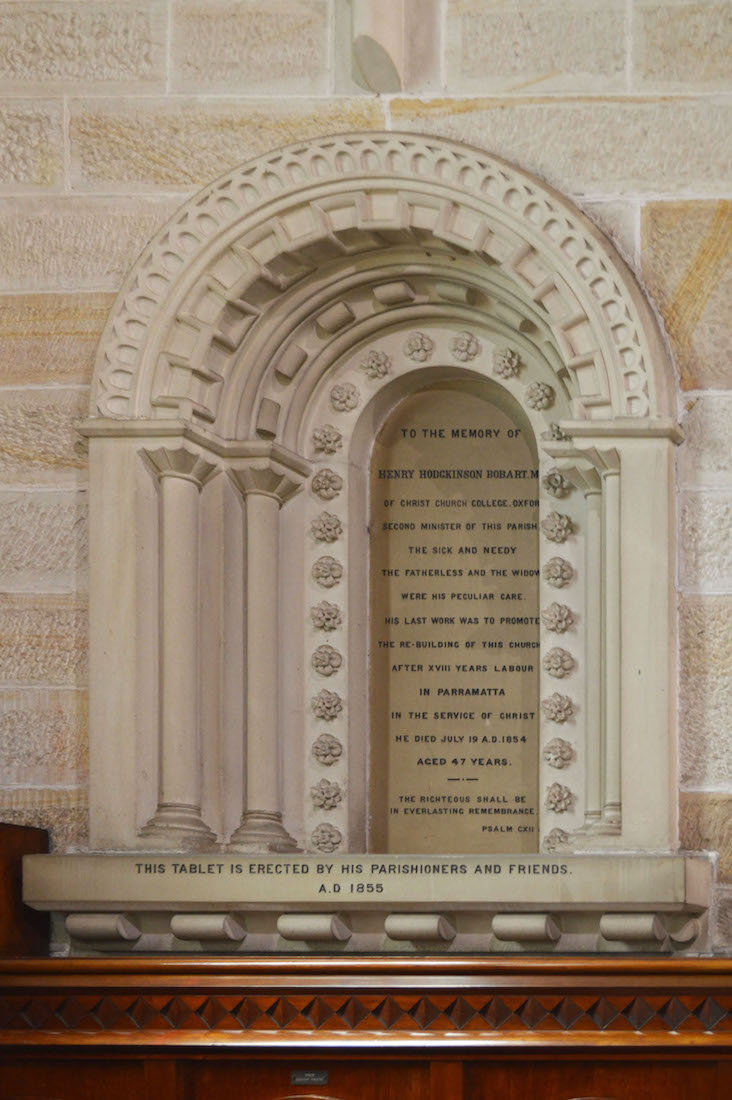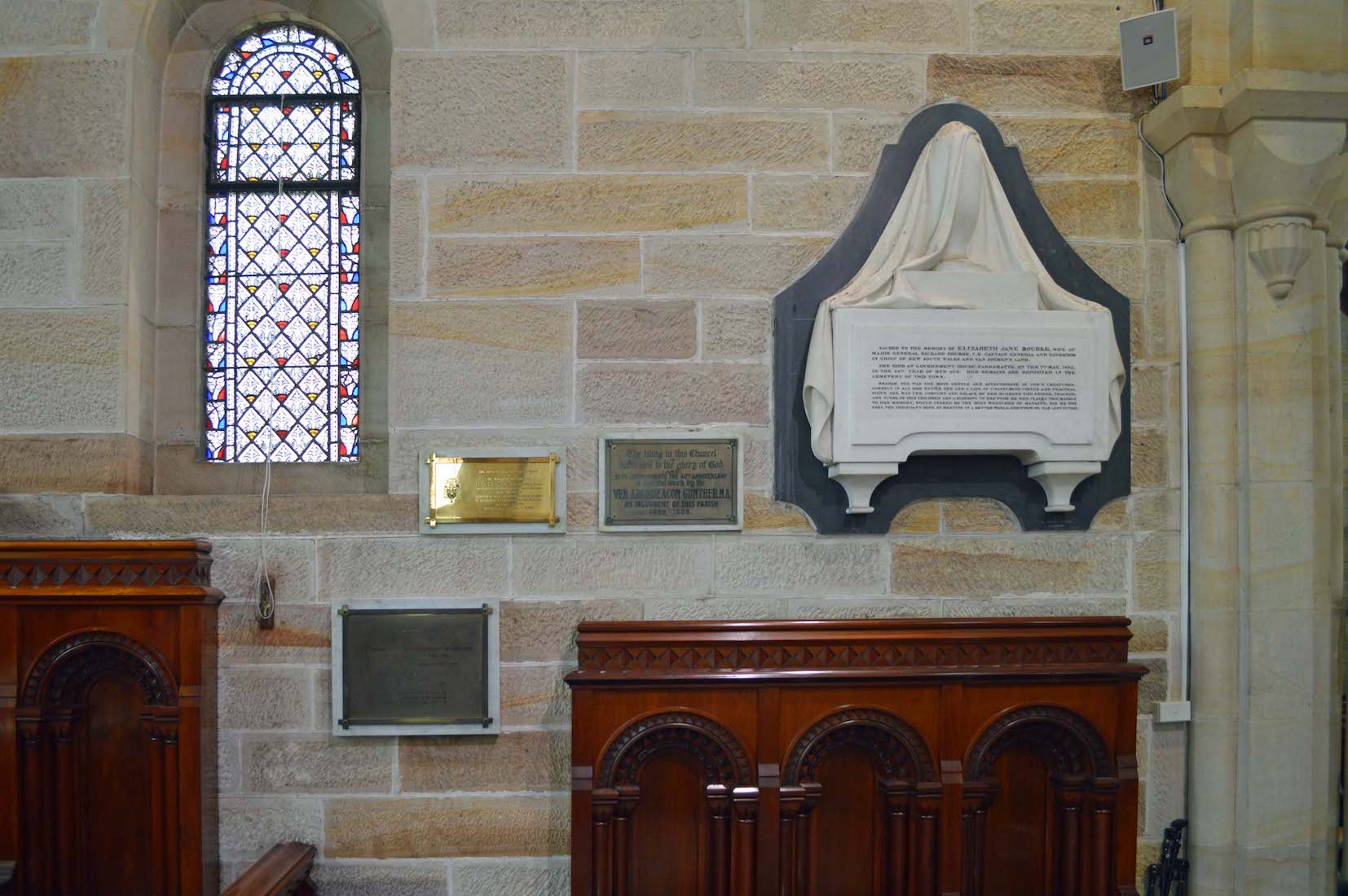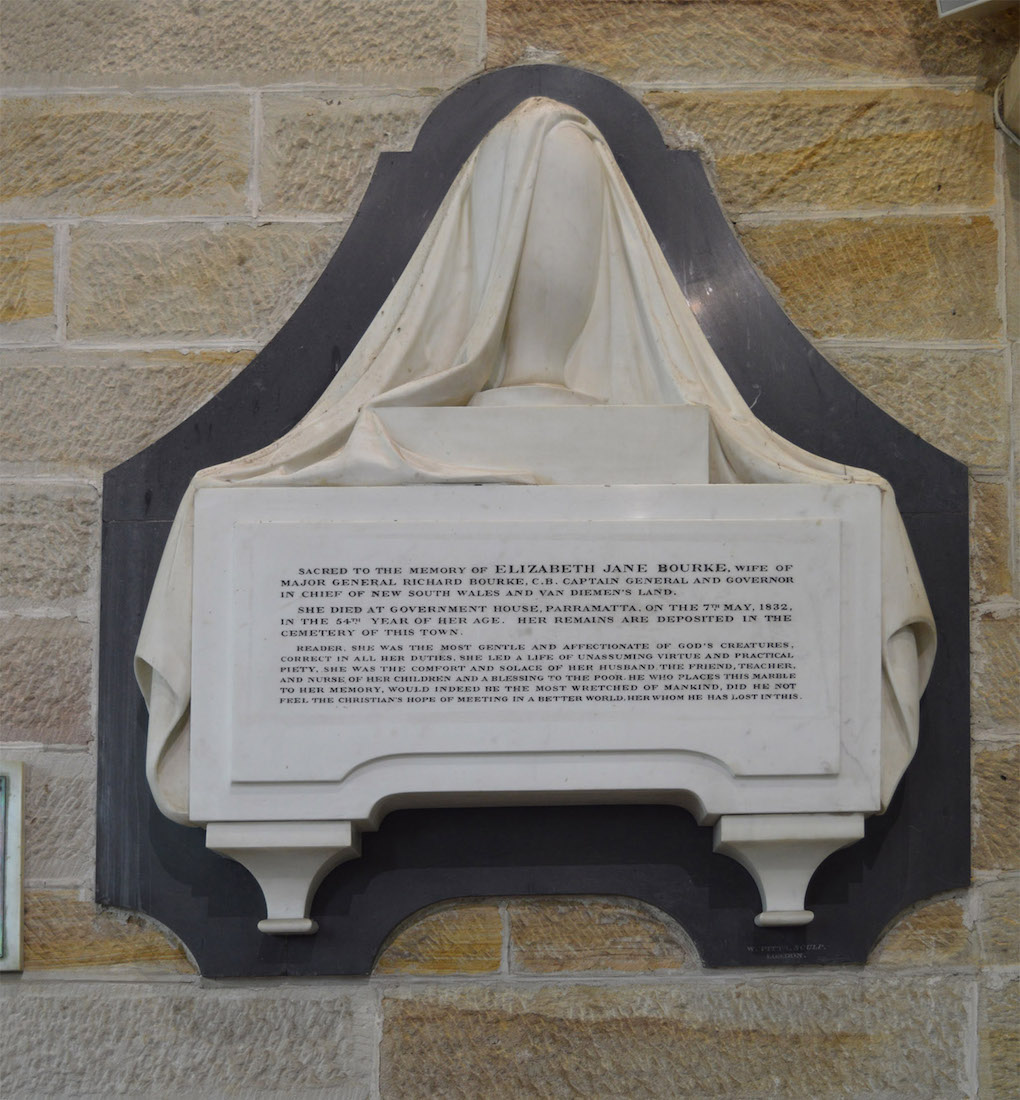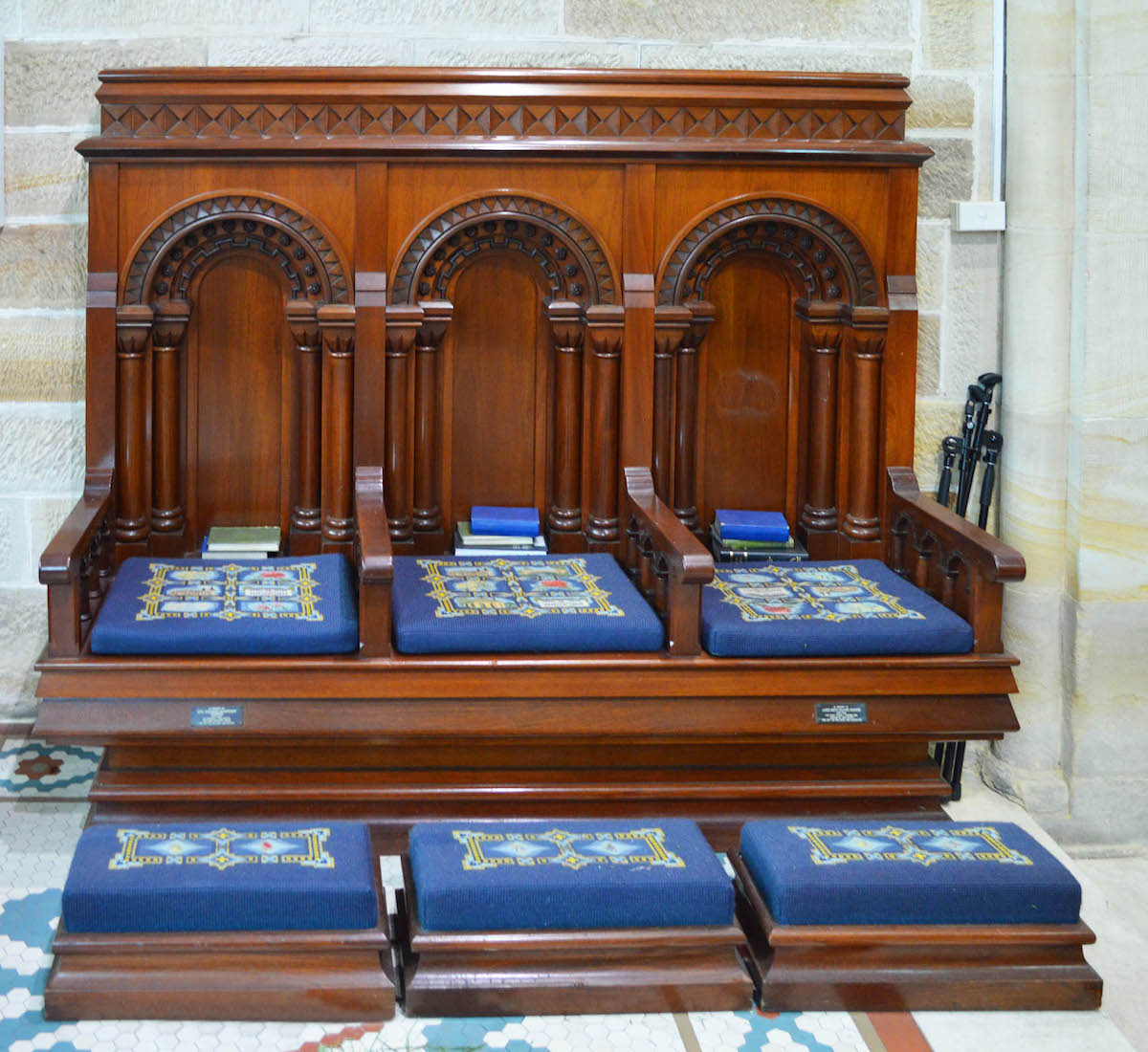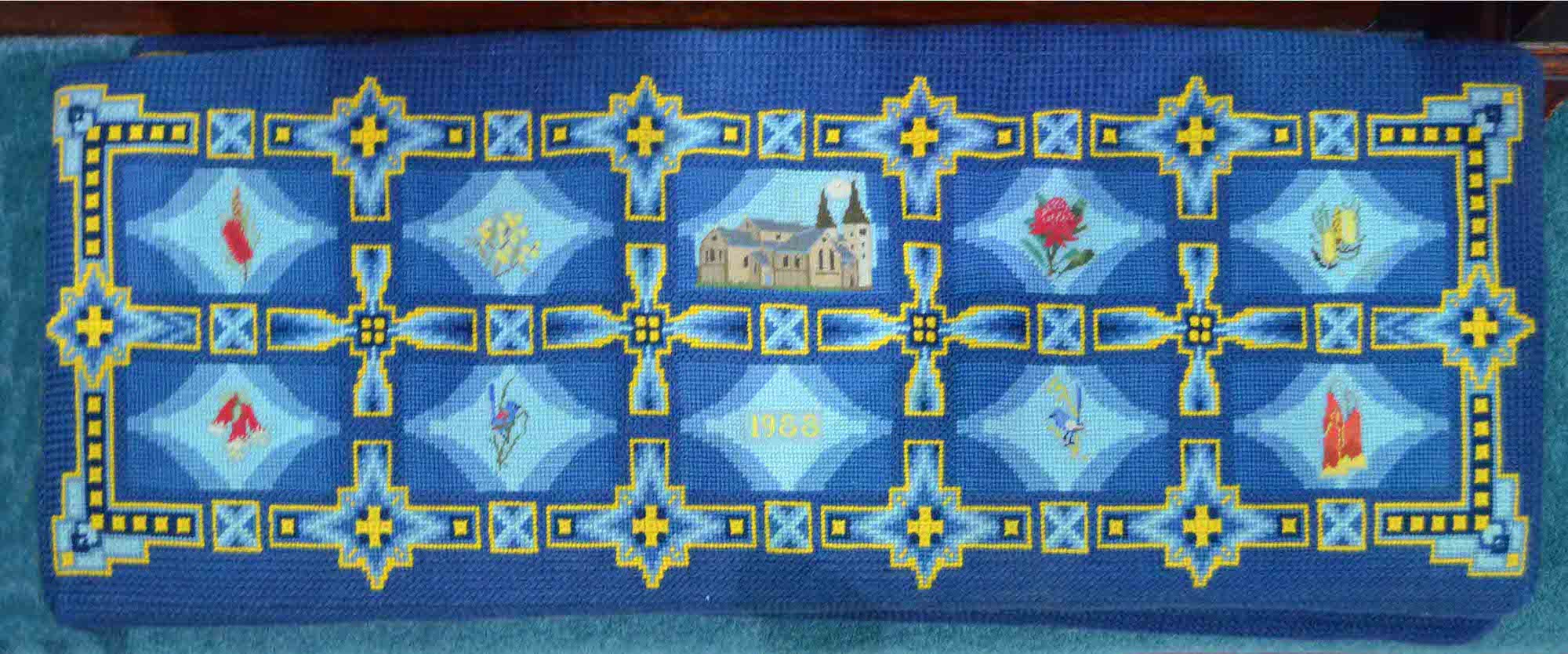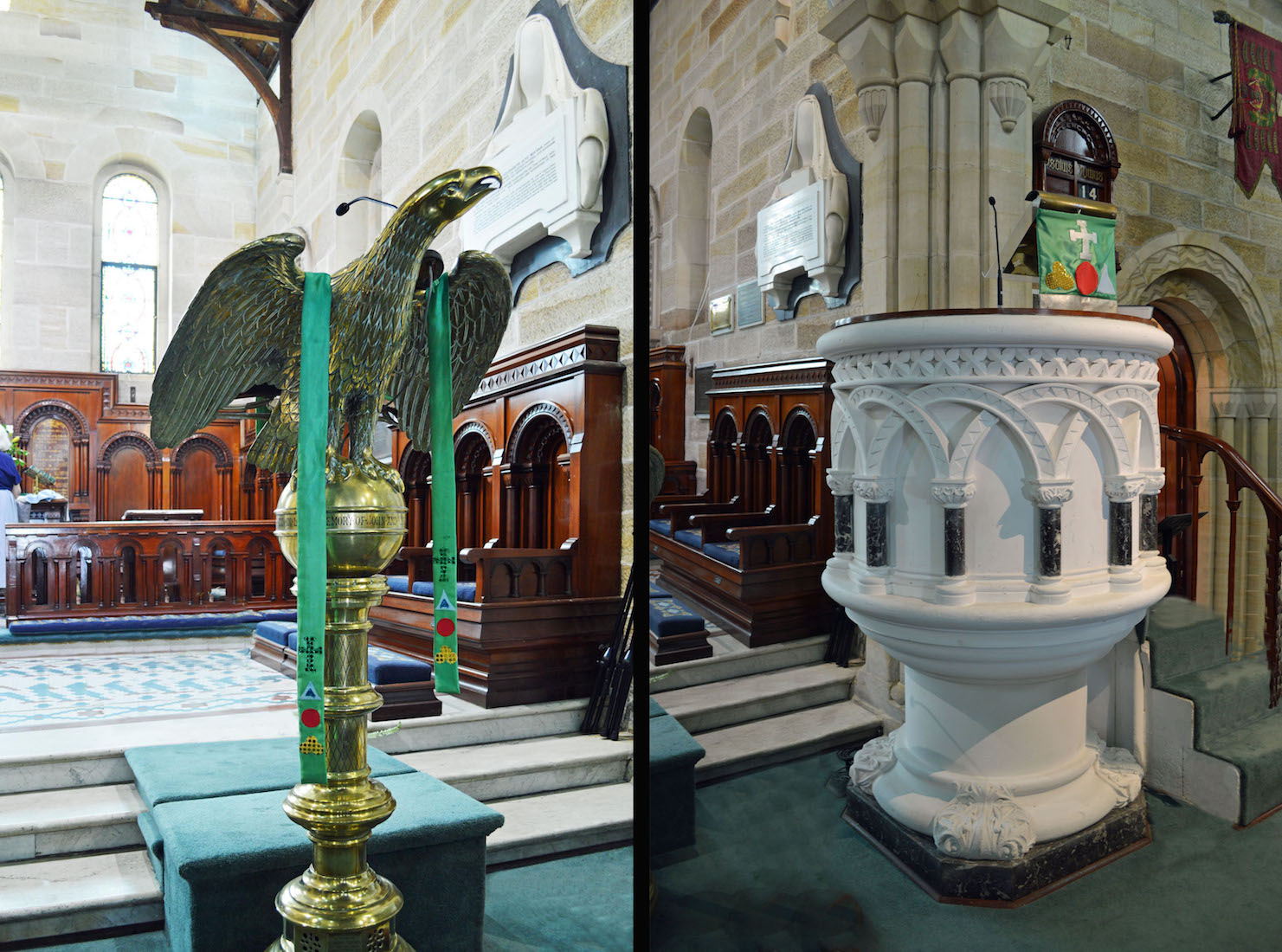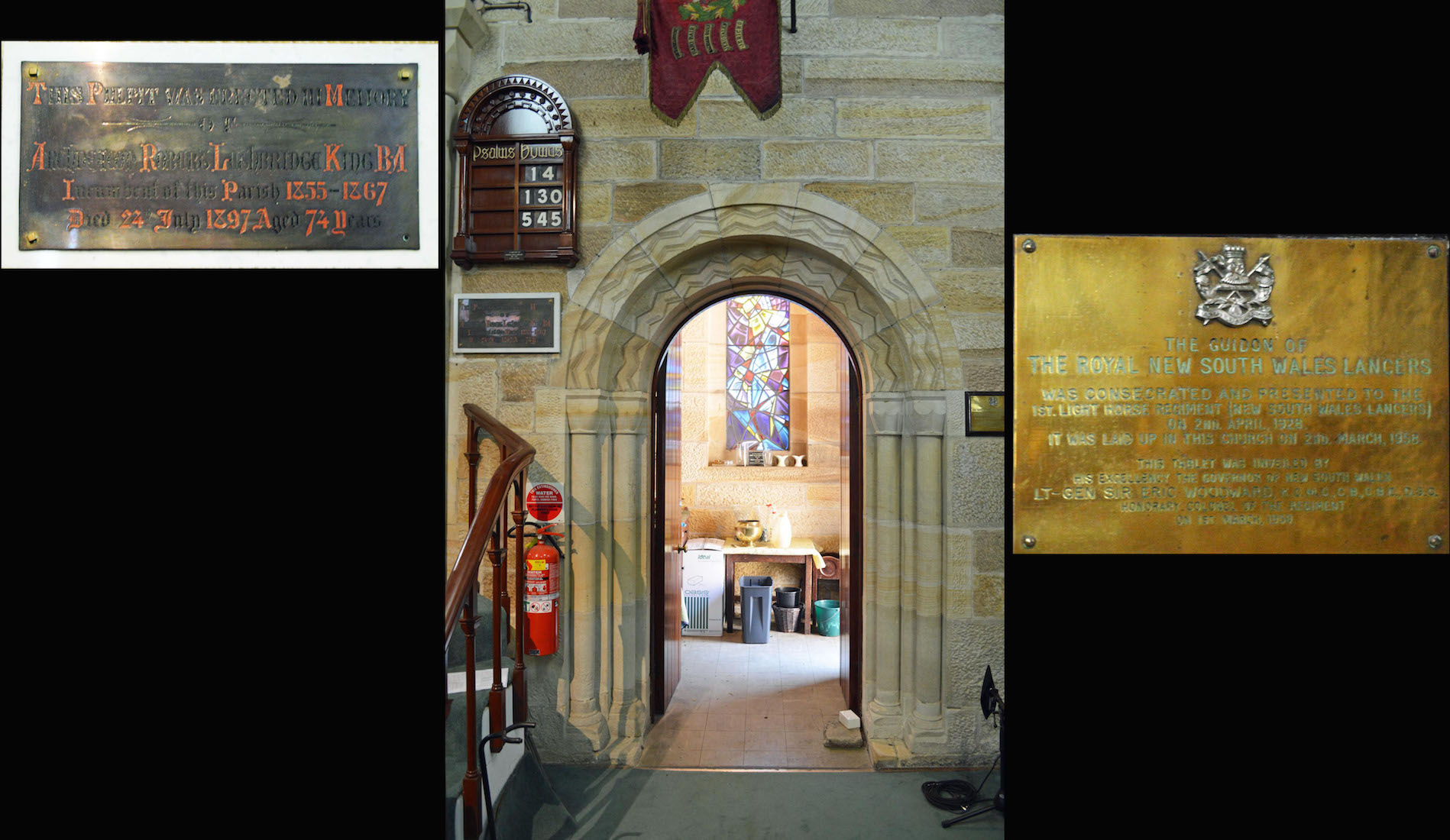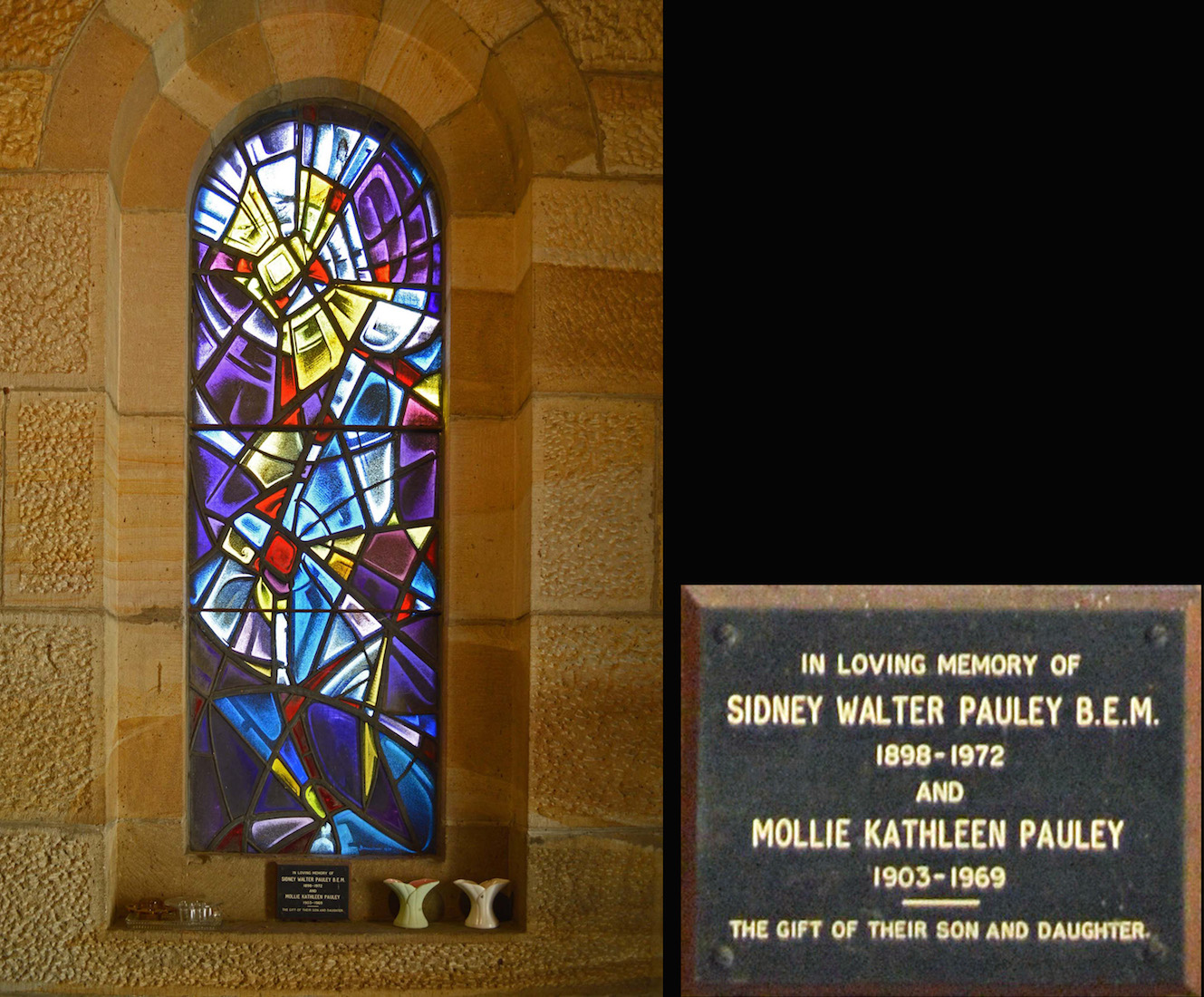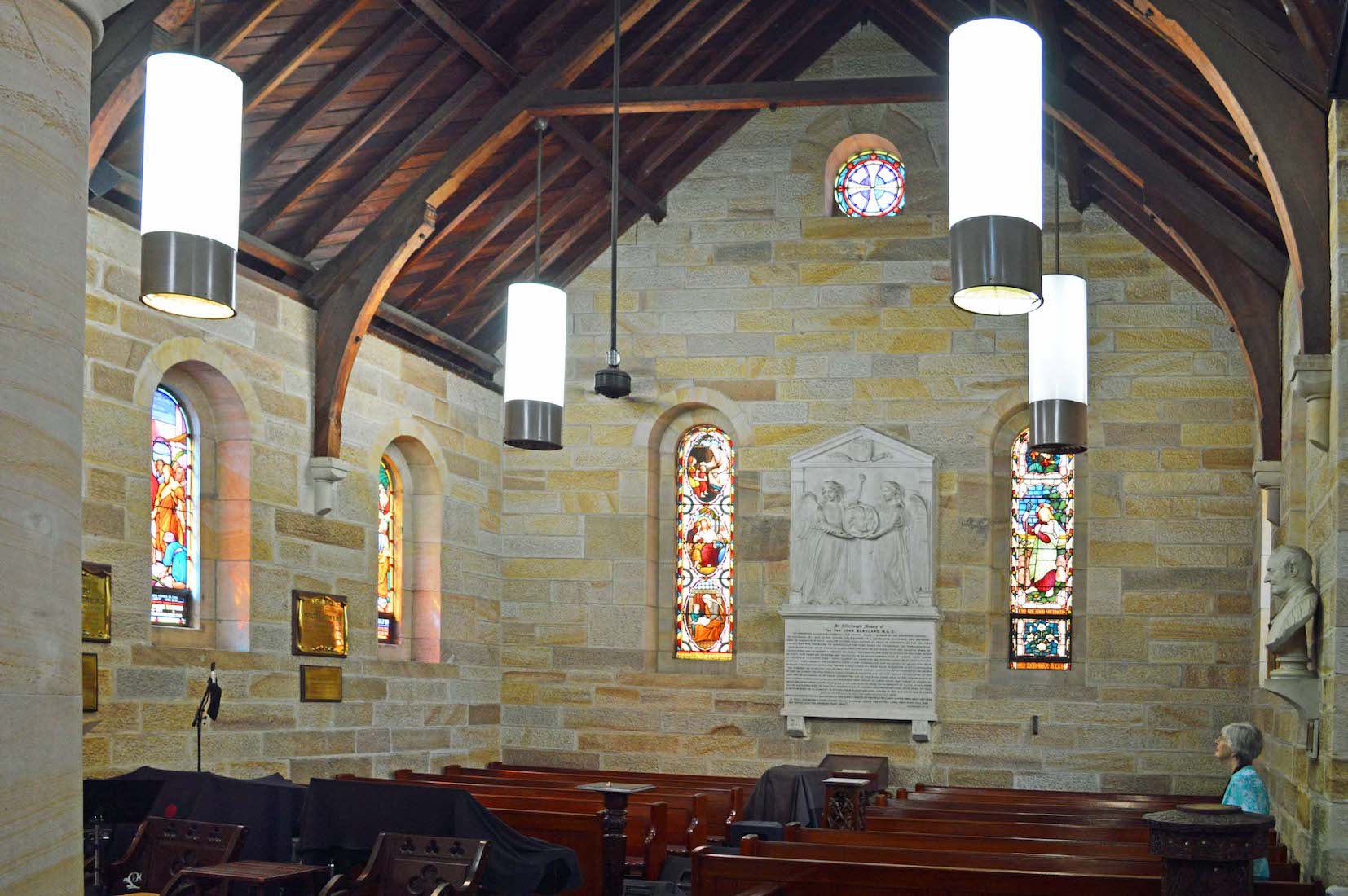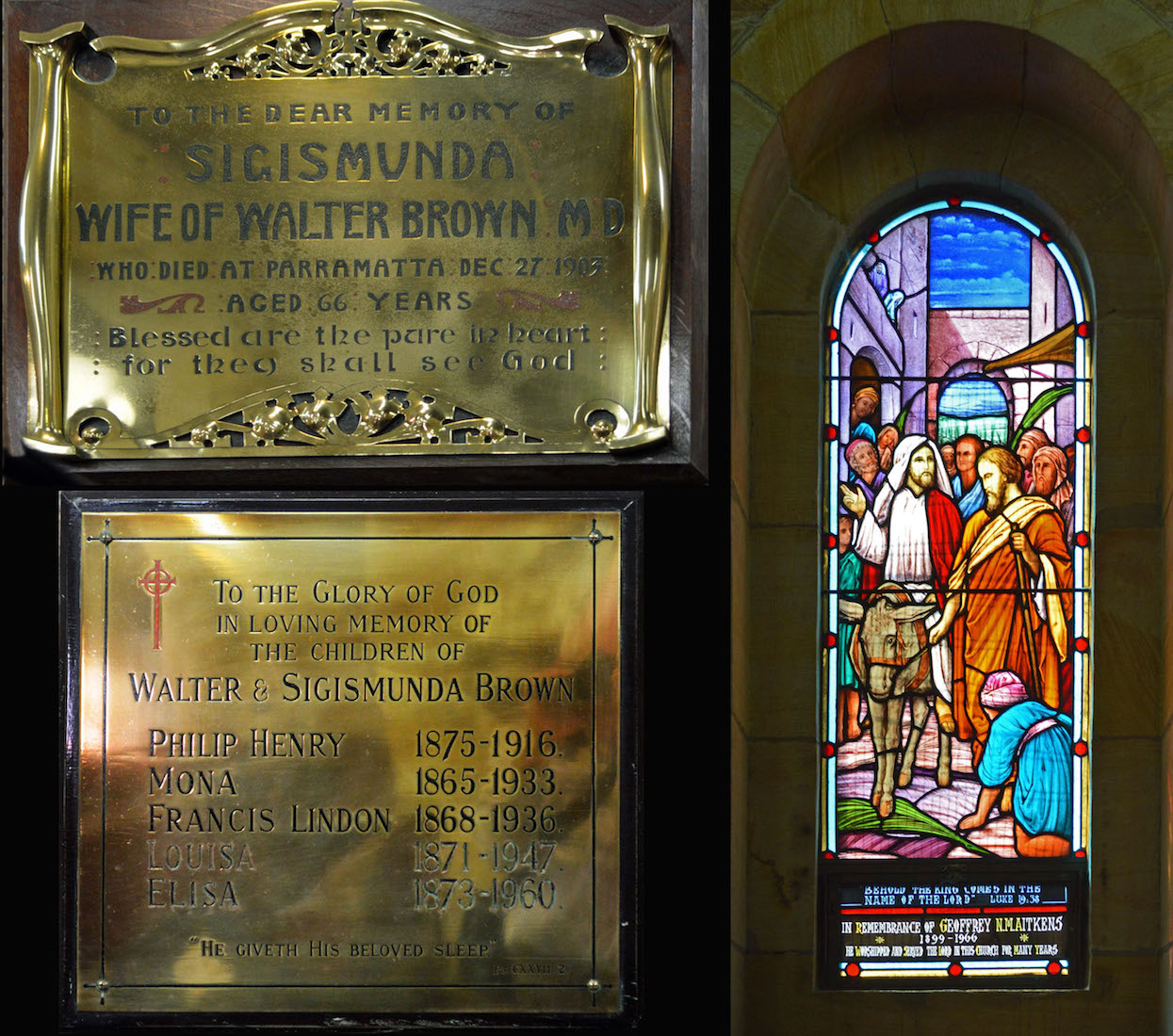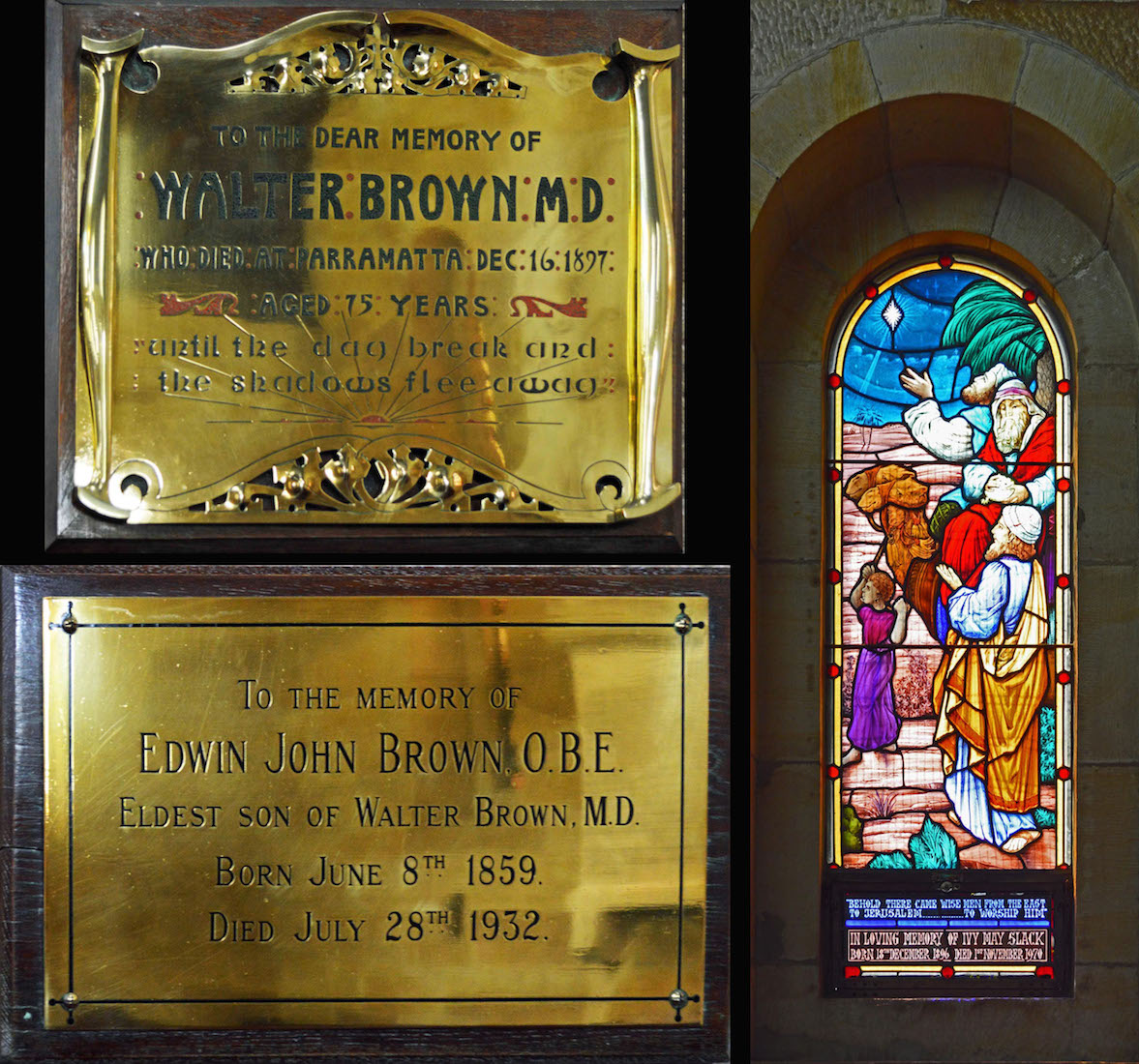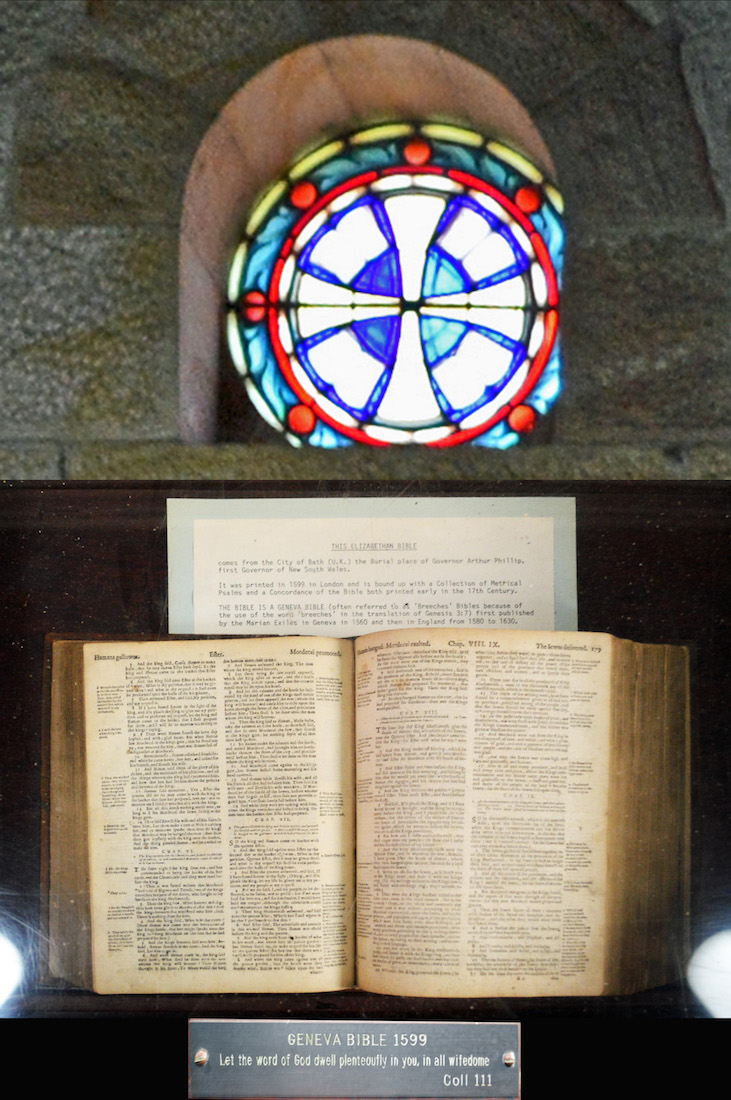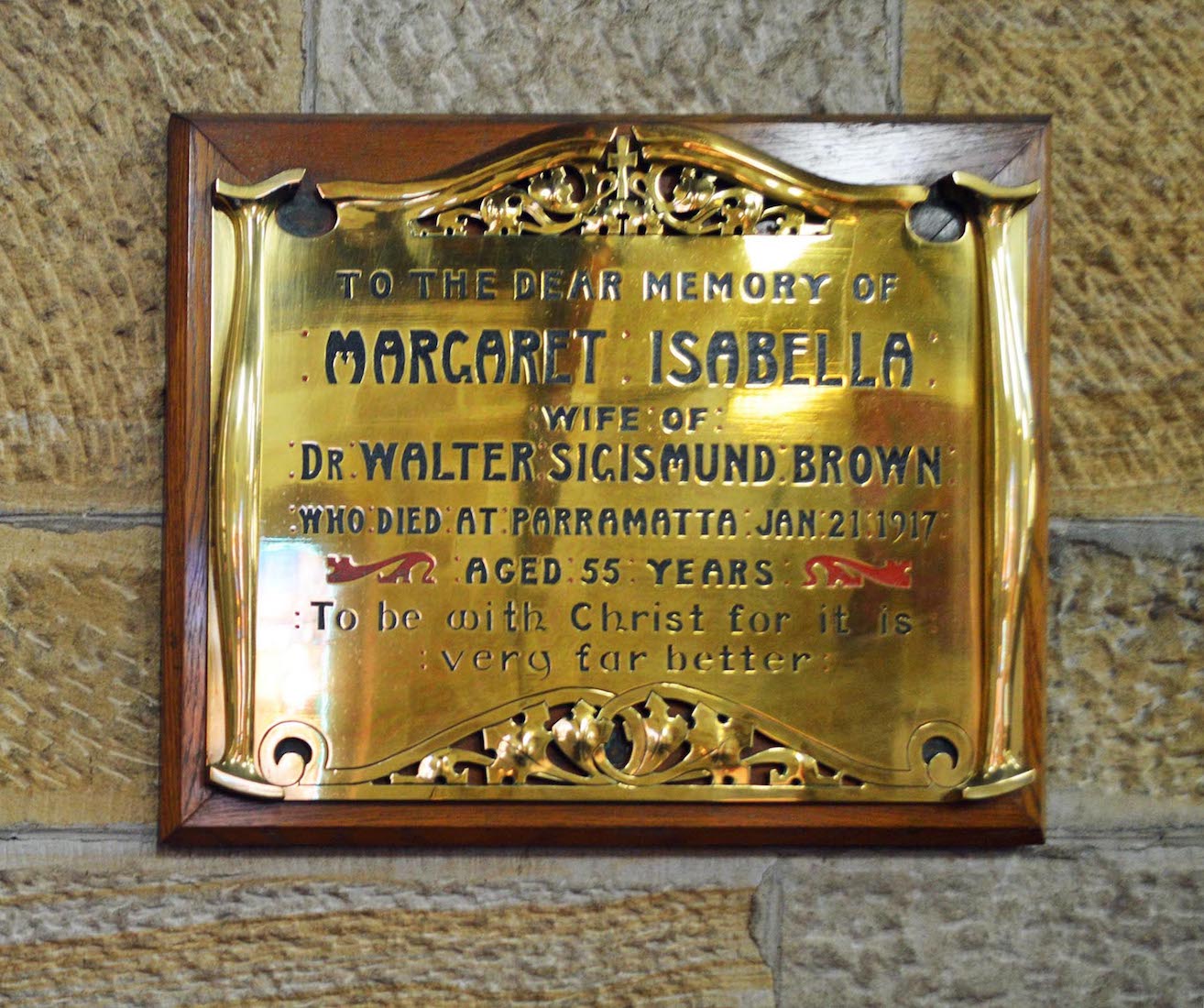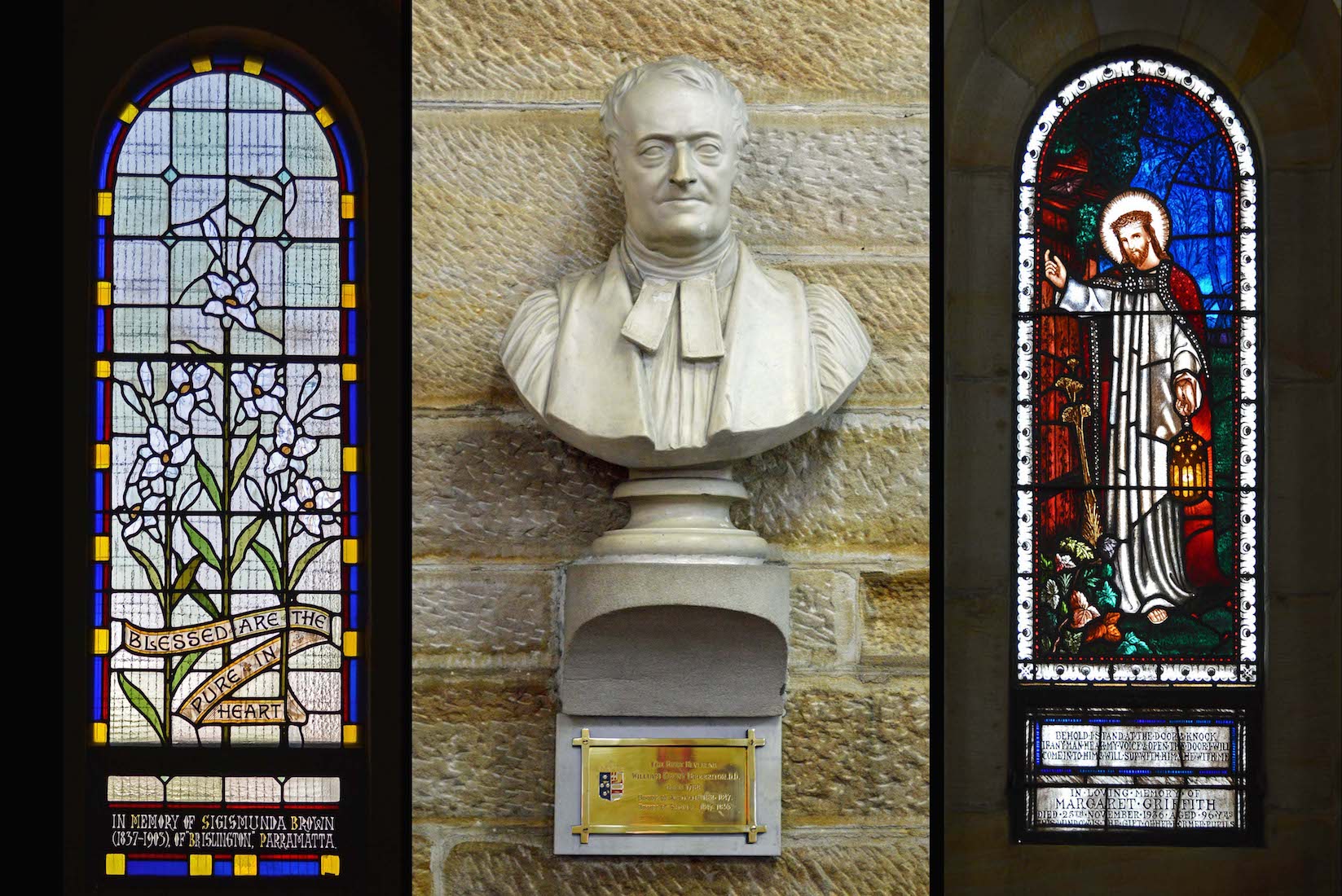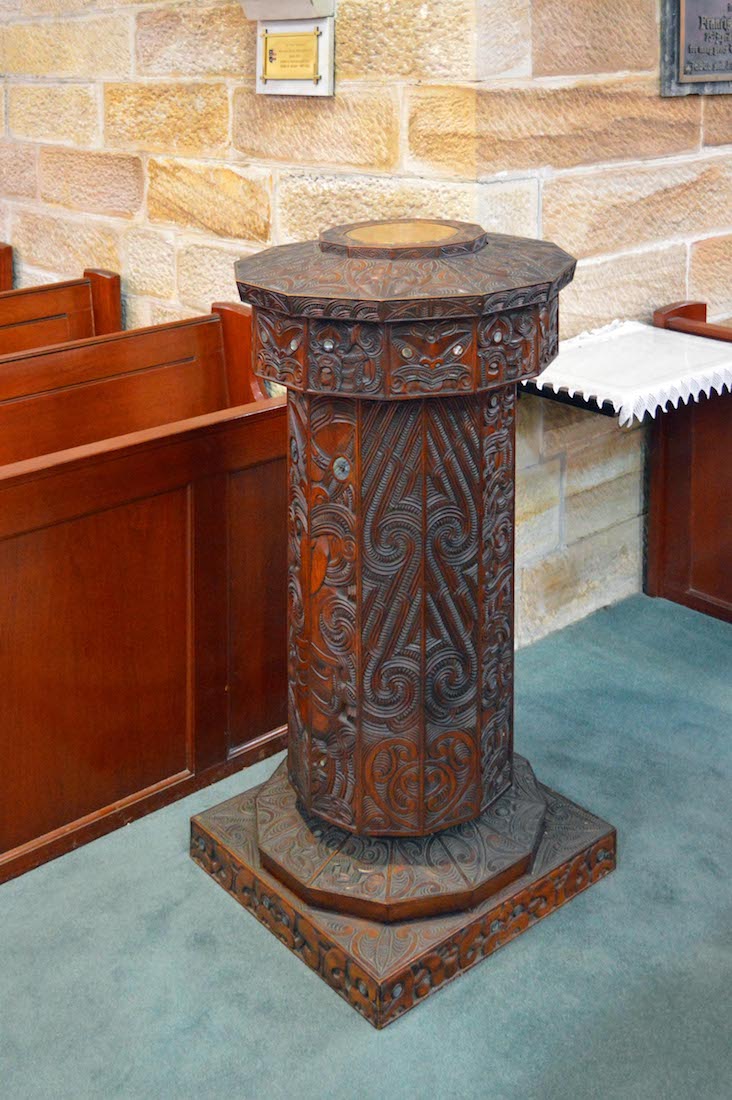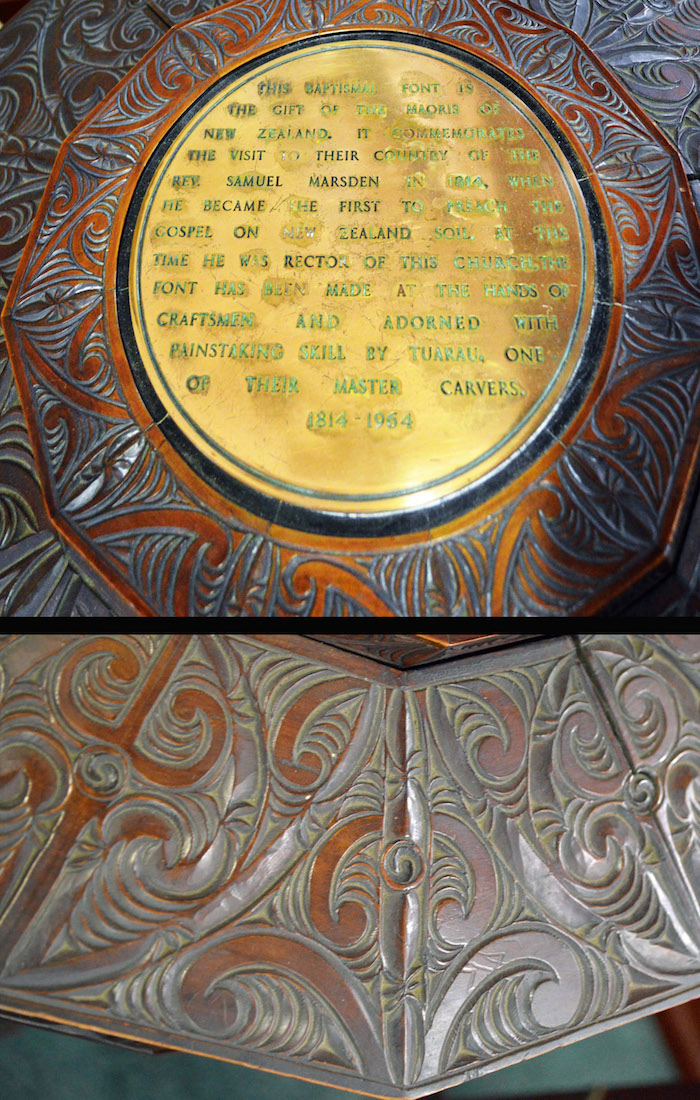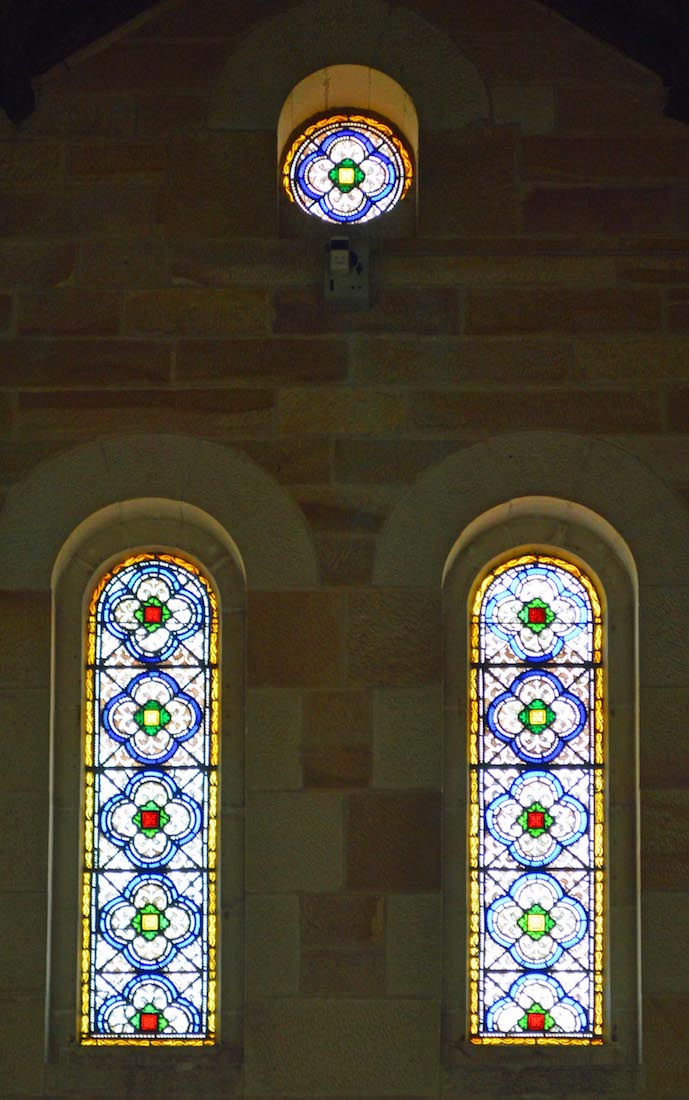
The East windows are made of the same ‘pressed quarry glass’ as the side windows. They have a stippled effect on the impressed side which comes from the contact of the glass with the cold metal of the mould. The resulting pane of glass is also of irregular thickness which has the effect of adding depth of texture to the transmitted light, as the light is reflected non-uniformly. The process is a production-line type of procedure which at the time cost approximately ten shillings a foot, compared with £5 for painted glass. Nevertheless, there are still a lot of individual touches on each window, giving them a special charm. PLAN
42. SOUTH SANCTUARY
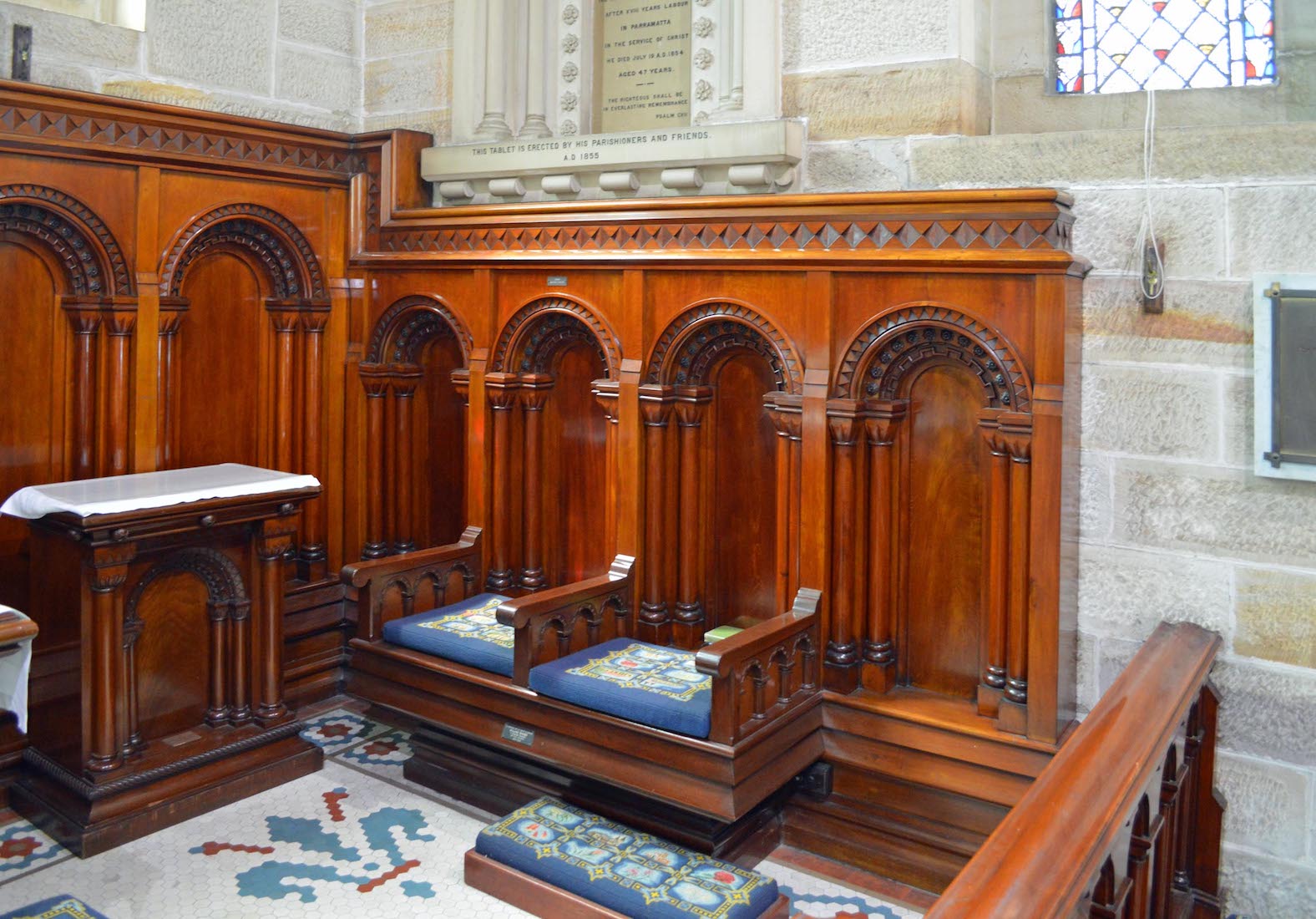
We now turn our attention to the South side of the sanctuary. There is a credence table, and several stalls set into the side panelling – not designed for comfort! Above we note the memorial and old style window in mirror image of those on the North side.
43. SOUTH SANCTUARY MEMORIAL
The memorial on the South wall of the sanctuary shown at left commemorates the life of Henry Hodgkinson Bobart who was the second minister of this parish where he served for 18 years up to his death in 1854 aged 47. He was particularly interested in ministering to the sick and needy, the fatherless and widows.
44. SANCTUARY SOUTH WALL
This more direct view of the South wall of the sanctuary shows the window and several of the memorials.
45. PLAQUES
The top brass plaque is in memory of the Revd Canon Kenneth Lawrence Loane, who was Rector of this parish from 1950 to 1983. Beneath is remembered The Ven S. M. Johnstone ... sub-chaplain of the Ven Order of St John in Jerusalem in the British Realm ... Rector of St John’s Parramatta from 1911 to 1935 ... . Below this, Ven Archdeacon Gunther M.A. Incumbent 1868 – 1903.
46. SANCTUARY TABLET
Memorial to Elizabeth Jane Bourke, wife of Major-General Richard Bourke C.B. Captain General and Governor-in-Chief of New South Wales and Van Dieman’s Land. Died at Government House, Parramatta, on the 7th May 1832 in the 54th year of her age. ...
47. STALLS
Below these plaques is another set of stalls. The various kneelers are lovely – coloured blue and depicting St John’s and various Australian fauna and flora.
48. KNEELER
The pictures on the kneelers include wattle, bottlebrush, waratah, eggs-and-bacon flowers, and the blue fairy-wren. There is even a picture of Brislington, an old Georgian manor located in Parramatta.
49. LECTERN AND PULPIT
Returning to the crossing we take note of the eagle lectern which dates from 1885. This is a traditional symbol, capturing the words of Isaiah 40:31 – ‘But they that wait upon the Lord shall renew their strength, they shall mount up with wings as eagles ... ’ Nearby is the round white pulpit given in 1899 in memory of R L King who was Rector of St John’s from 1855 to 1867. This pulpit was designed by Cyril Blackett and constructed by A Arnold. It replaced the wooden pulpit used in the ‘new’ 1855 church.
50. SOUTH EAST EXIT
Just behind the pulpit is the exit through the South East porch. The plaque at left sits just below the hymn board in the photo. The plaque at right refers to the guidon hanging above. It says that the guidon of the Royal New South Wales Lancers was consecrated and presented to the 1st Light Horse Regiment (New South Wales Lancers) on 2nd April 1928. It was laid up in this church on 2nd March 1998.’
51. PORCH WINDOW
In the porch is an interesting stained glass window. I think I can see a bowed figure in it, but you may have your own interpretation! At the base of the window is a small plaque which reads: ‘In loving memory of Sidney Walter Pauley B.E.M 1898 – 1972 and Mollie Kathleen Pauley 1903 – 1969 The gift of their son and daughter’.
53. PLAQUES AND WINDOW
The plaques at left remember the wife, Sigismunda, and children of Walter Brown M.D. Sigismunda Brown lived from 1837 to 1903, but as was often the case in the early days, little is recorded about her. The ‘Palm Sunday’ window shows palm branches being laid as Jesus comes riding into Jerusalem on a donkey (Mark 11:1 – 10). The given text is: ‘ “Behold the King comes in the name of the Lord” Luke 19:38’. The window was given in remembrance of Geoffrey N. M. Aitkens 1899 –1966, who worshipped and served in this church for many years.
54. PLAQUES AND WINDOW
The next two brass plaques are in memory of Walter Brown M.D. and his eldest son Edwin John. Dr Walter Brown, 1821 – 1897, came to Australia as a ship's surgeon and returned in 1857 to settle down. He was the medical officer of the Hospital for Insane, Parramatta. At th e time he was churchwarden at St John’s Church. Next is ‘the Wise Men’ window, showing three wise men bearing gifts and following the star. The window was given in loving memory of Ivy May Slack Born 18th December 1896 Died 1st November 1970.
55. MEMORIAL AND TWO WINDOWS
The South wall has two windows and a large memorial to the Hon John Blaxland M.L.C., 1845 – 1888. The left window shows Simeon blessing the young Jesus (Luke 2:27, 28), Jesus with a group of children (Mark 10:13–16), and probably Eunice instructing Timothy (2 Tim 1:5, 3:14–15). The right window is the Good Shepherd window, showing Jesus holding a shepherd’s crook and carrying a lamb. This window is in memory of The Revd W. Woolls Ph.D. F.L.S , who was an Australian botanist, clergyman and schoolmaster.
56. GENEVA BIBLE
The central glass case contains an old Geneva Bible. This Elizabethan Bible comes from the city of Bath (UK), the burial place of Governor Arthur Philip, first Governor of New South Wales. It was printed in 1599 in London, and is bound up with a Collection of Metrical Psalms, and a Concordance of the Bible, both printed early in the 17th Century. The Bible is a Geneva Bible (often referred to as Breeches Bibles because of the use of the word ‘breeches’ in Gen 3:7.), first published in Geneva in 1560, and then in England from 1580 until 1630. There is a round stained glass window above.
57. PLAQUE
The plaque commemorates Margaret Isabella, wife of Dr Walter Sigismund Brown who died Jan 1917 aged 55 years. ‘Sigismund’ is a German proper name meaning ‘protection through victory’. Three generations of the Brown family lived in Brislington, a gracious Georgian residence in Parramatta.
58. WINDOWS AND BUST
The left window on the West wall of the transept shows three stems of lilies with a script: Blessed are the pure in heart (Matthew 5:8). It is in memory of Sigismund Brown (1837 – 1903) of Brislington, Parramatta. At centre is the bust of the Right Reverend William Grant Broughton D.D who was born in 1788. He was Bishop of Australia from 1836 to 1847, and then became Bishop of Sydney when the diocese was subdivided. He died in 1853. The right window in the South transept is a variant on Holman Hunt’s painting ‘The Light of the World’.
59. FONT
Leaving the South transept, it is a surprise to come across this baptismal font with its distinctly Maori features.
60. FONT DETAIL
The top plaque reads: ‘This baptismal font is the gift of the Maoris of New Zealand. It commemorates the visit to their country of the Rev Samuel Marsden in 1816, who became the first to preach the gospel on New Zealand soil. In this time he was Rector of this church. The font has been made at the hands of craftsmen and adorned with painstaking skill by Tuarau, one of their master carvers. 1814 – 1964.’ In fact Iotua Charlie Tuarau lived 1912 – 1996, so the meaning of the given date is unclear.


